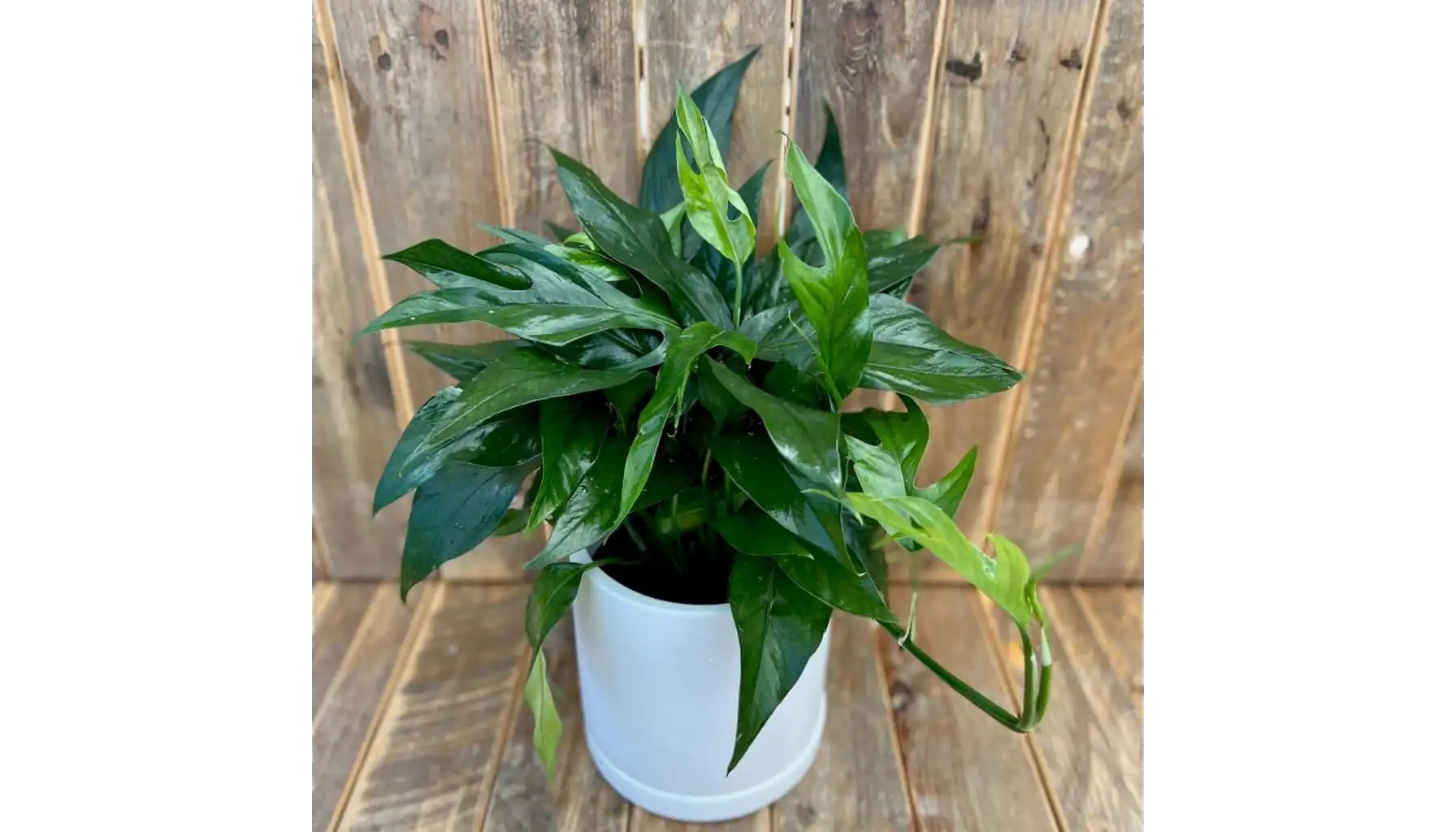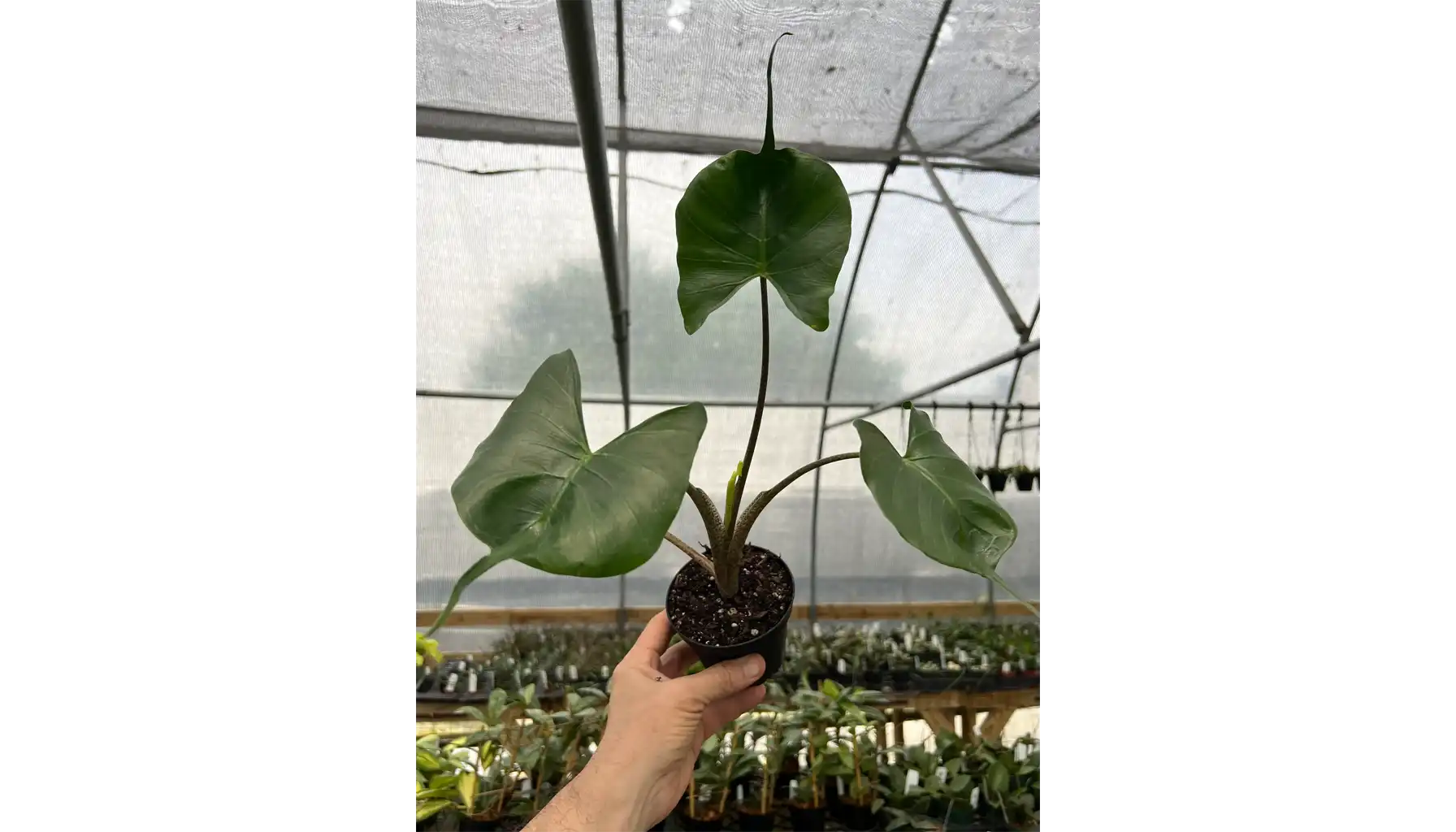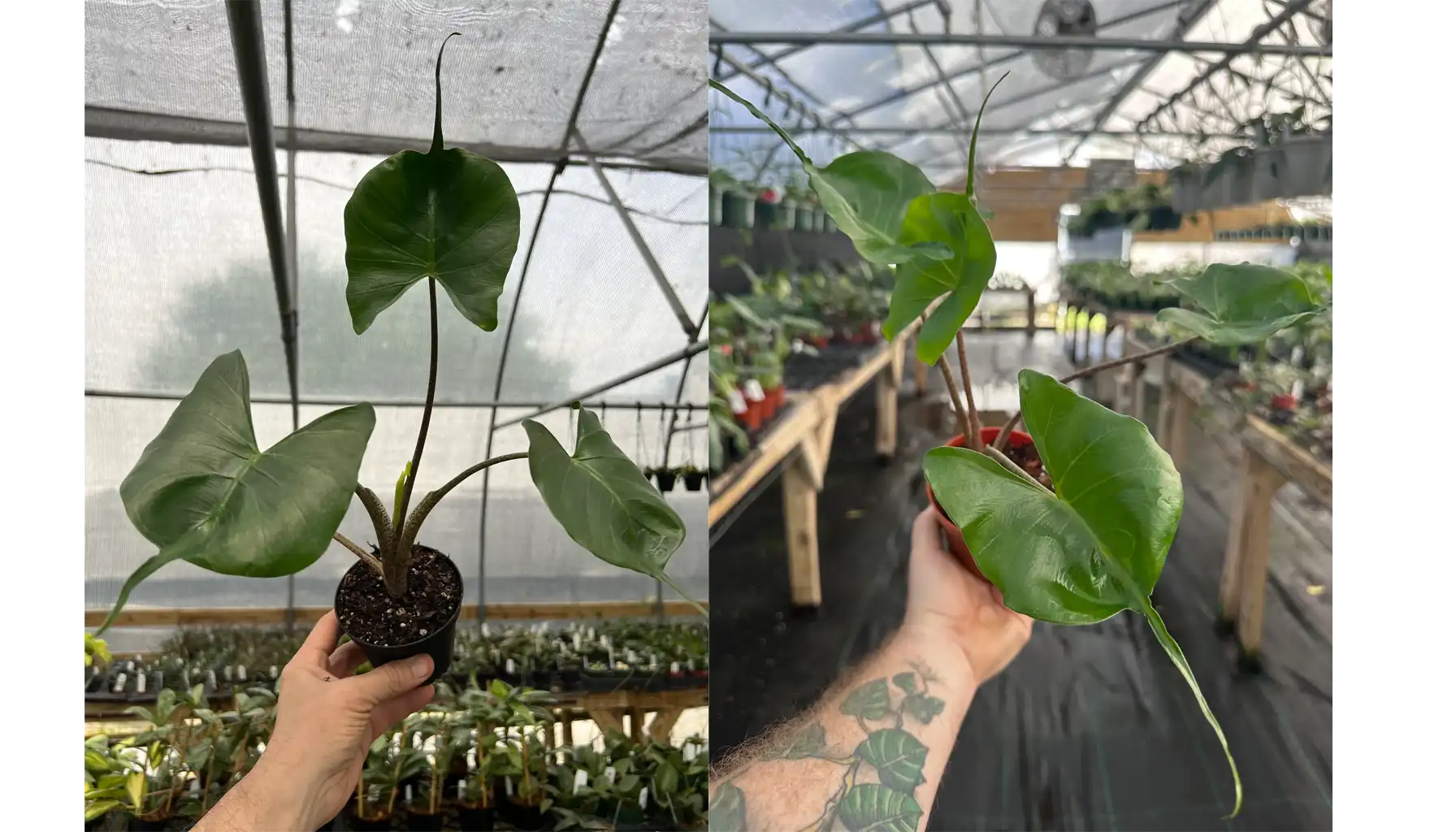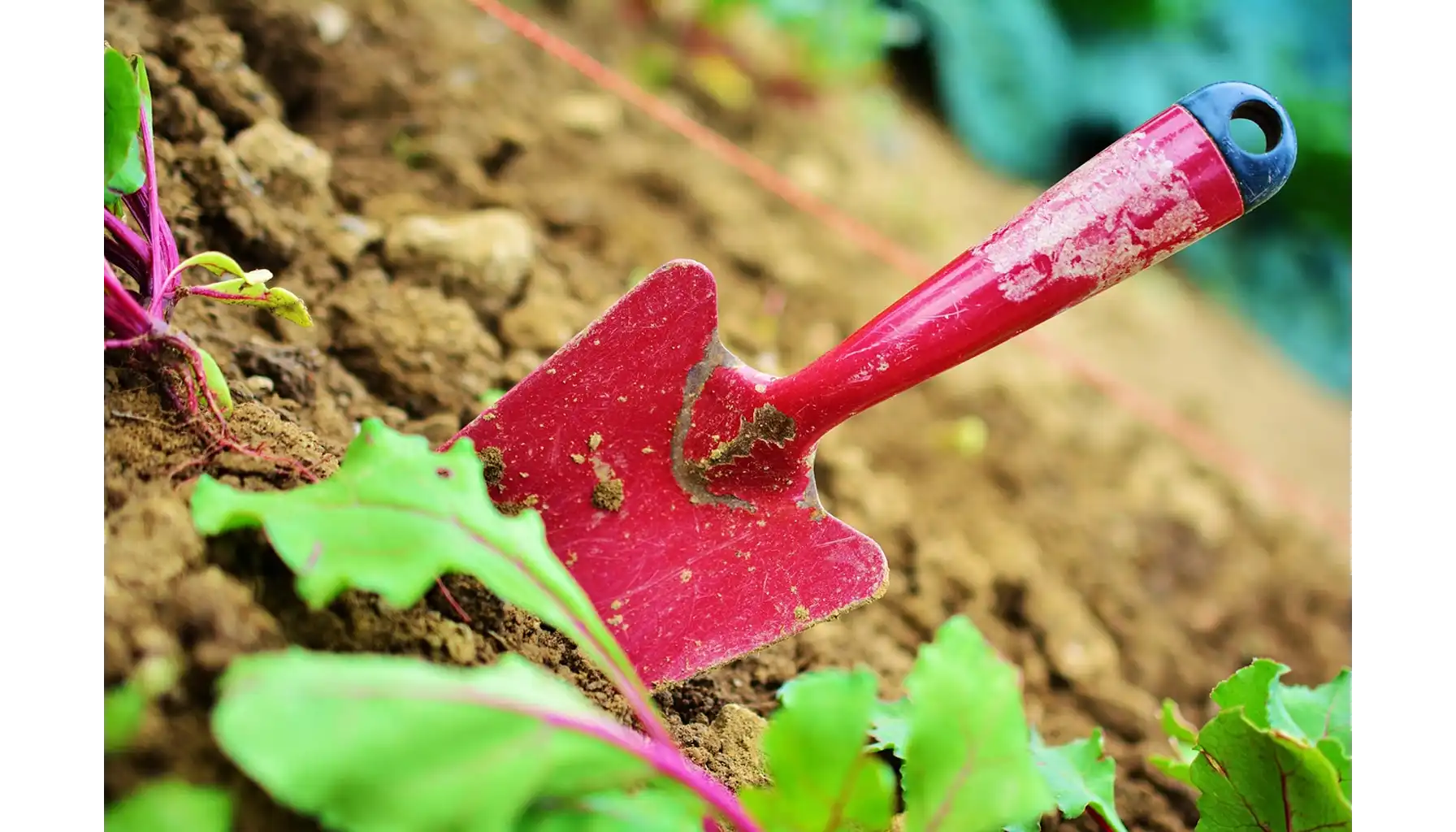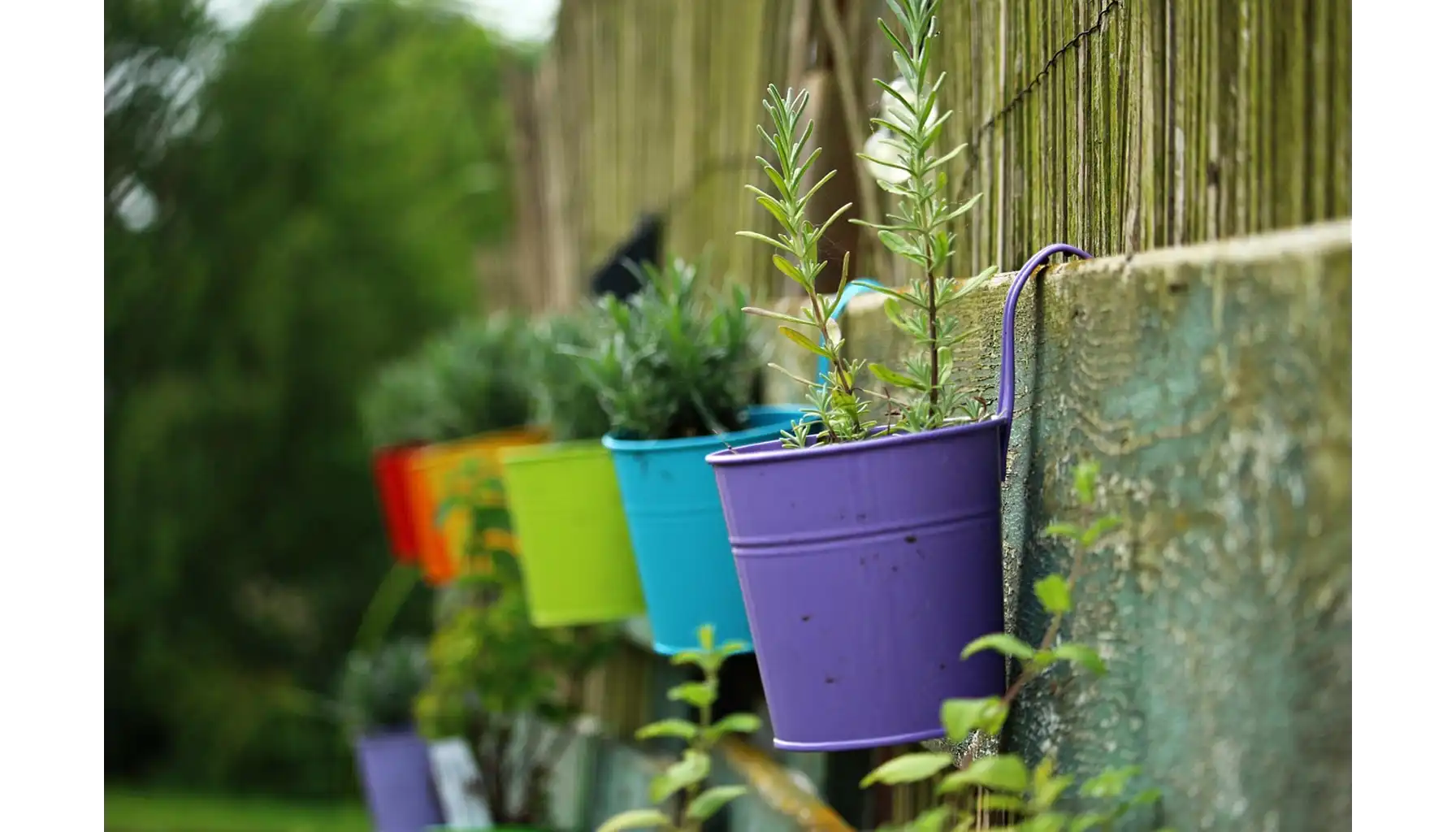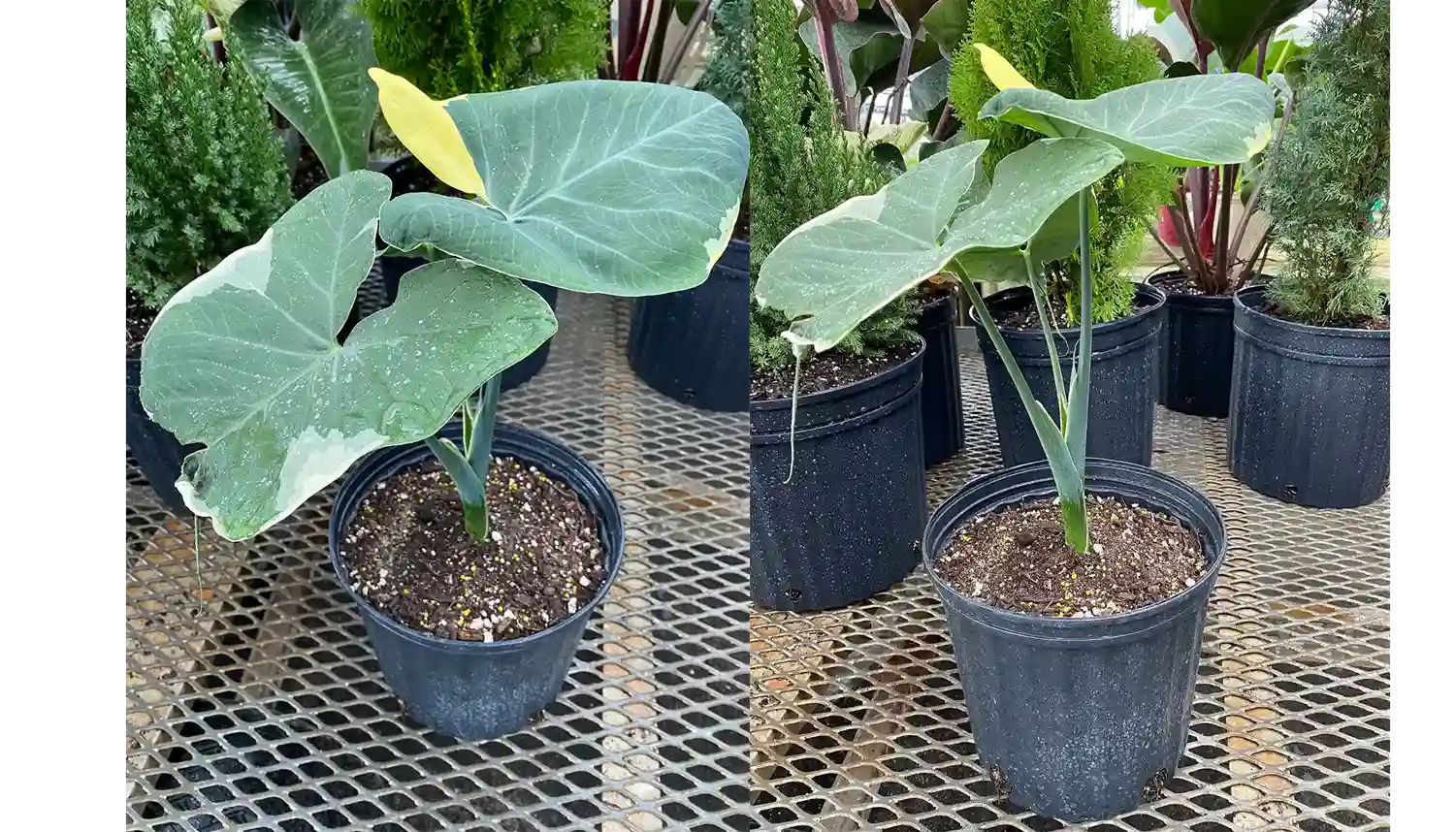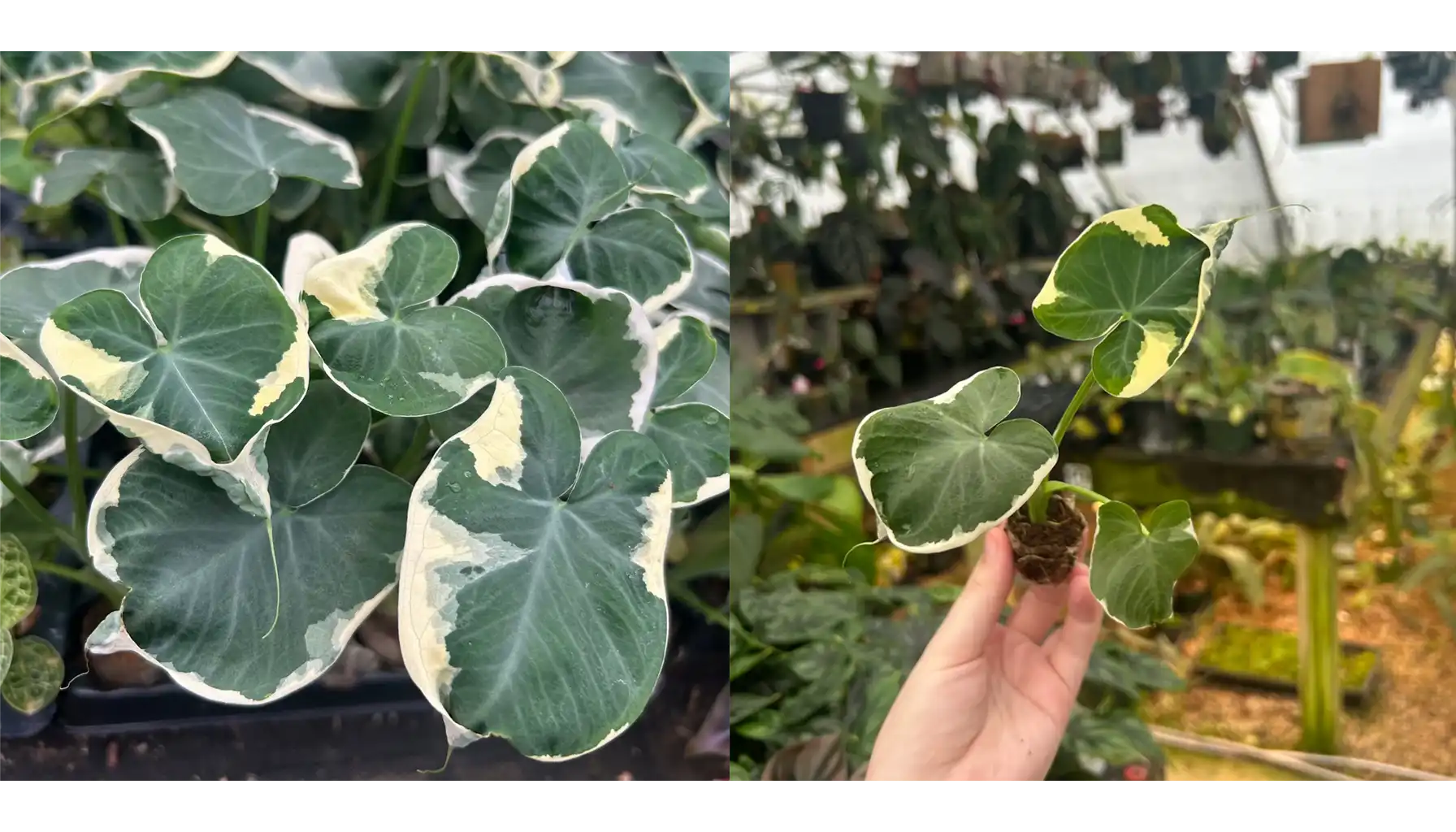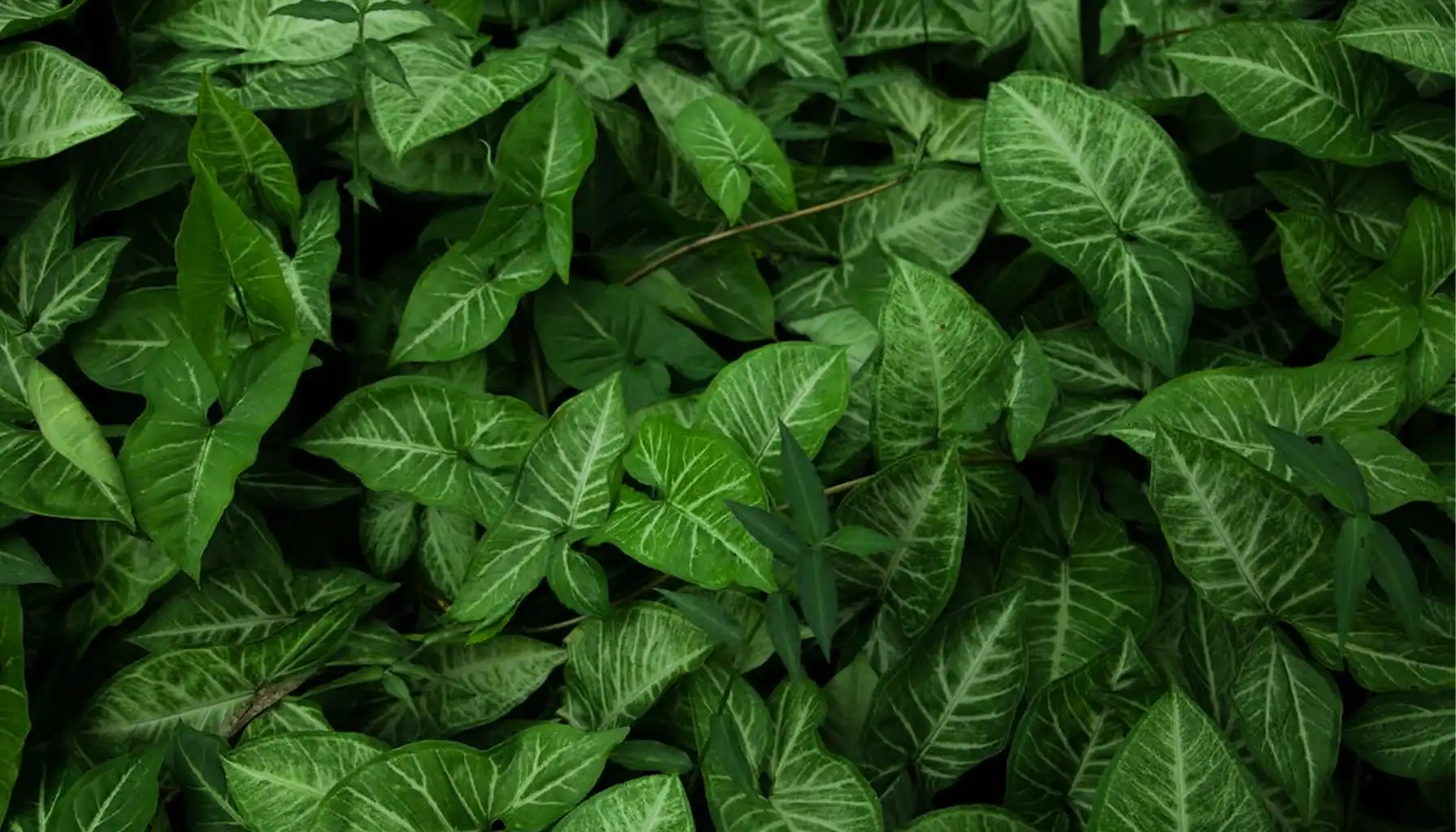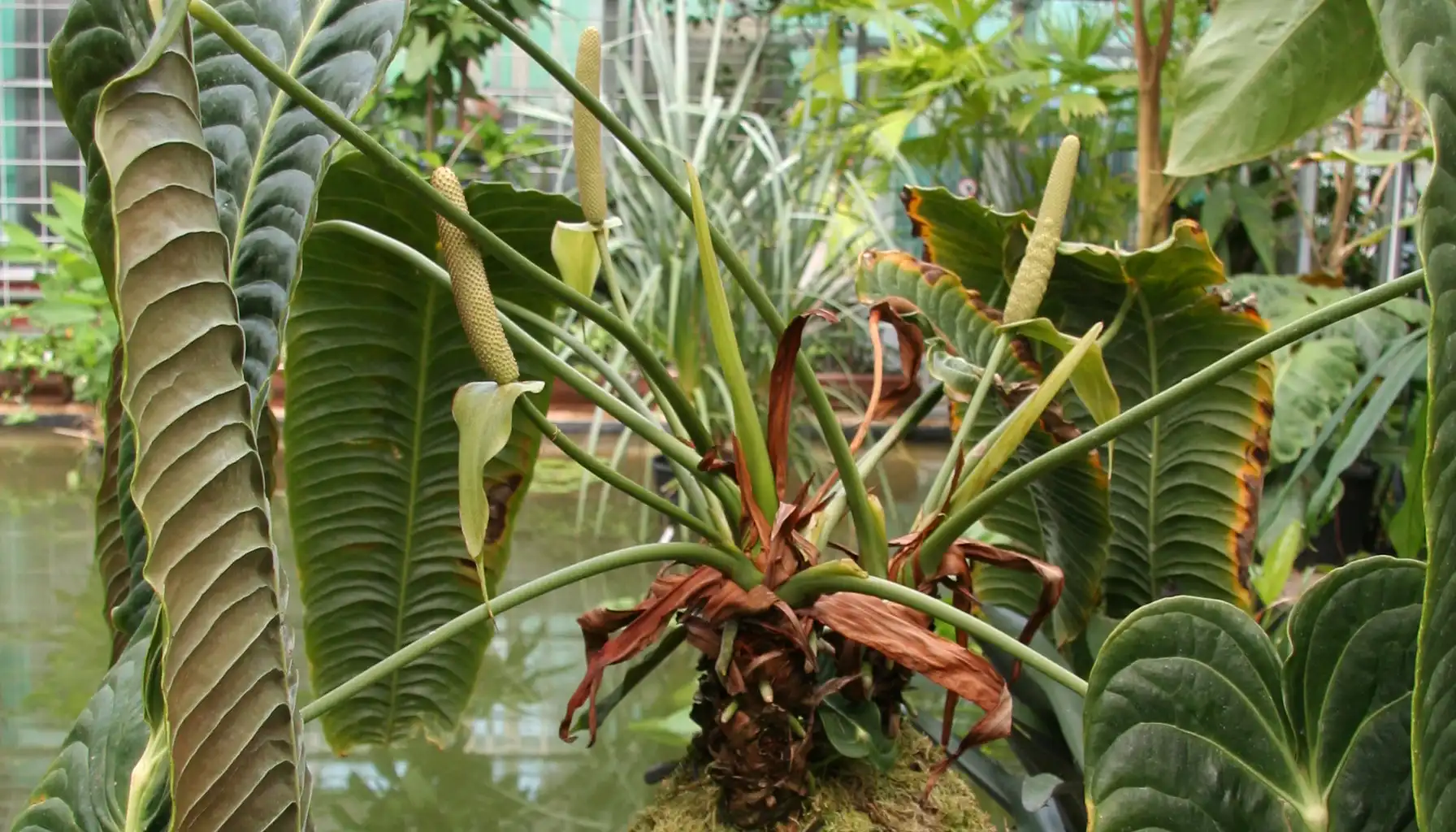The alocasia stingray, also called stingray alocasia, boasts some of the most unusual leaves, resembling stingrays in shape.This tropical plant attracts attention, and proper alocasia stingray care will grow beautifully indoors. Imagine how it will look in combination with a Monstera, creating a jungle atmosphere in your living room—both plants love similar environments but bring a sense of nature to the interior.
If you're puzzled by that odd-shaped leaf in your collection and want to confirm it's an alocasia stingray, head over to this plant identifier for a fast check.
Introduction to Alocasia Stingray
Origins and Habitat
The Alocasia stingray scientific name is Alocasia macrorrhizos 'Stingray', hailing from steamy Southeast Asian forests (Philippine Islands, Malaysia, Ceylon). Alocasia stingray in the wild usually hides under tree canopies, which helps it hide from bright sunlight and feel more humidity. These conditions determine its needs at home, so for best results, you should imitate them.
Unique Features and Appearance
What makes the Alocasia 'stingray' popular? Its leaves are approximately up to the fourth front vein, counting from the petiole, and have a more or less familiar shape.
Further on, there is a sharp narrowing towards the central vein, which extends for the same length but is almost bare. This results in a leaf shaped like a stingray. The long narrow part with the tip of the leaf forms the “tail,” and the leaf plates at the base form the body of the stingray.
The adaxial side of the leaf is noticeably darker than the abaxial side and has a slight sheen. Keep toxic plants like this one out of reach of pets, as they can cause irritation if chewed.
Essential Care Requirements
Light Needs
Alocasia stingray light requirements call for bright, filtered sunlight to shady conditions. Direct sunlight can badly burn the leaves. On the other hand, if it’s placed in a location with insufficient light for a long time, its stem will become thin and its leaves will become soft. It’s best to grow this flower in partial shade.
Watering Guidelines
The plant doesn’t like drying out, so it should be watered regularly. The soil should be moist, not wet. Allow the top layer of soil to dry to a depth of 2-3 cm, then water again.
Remember that your plant must have adequate drainage (well-drained soil and a pot with drainage holes) to prevent the soil from becoming waterlogged. The ideal watering schedule is to water weekly to mimic the conditions of its natural habitat.
Humidity and Temperature Preferences
Aim for a humidity level of 50-70% to prevent crispy leaf edges — use pebble trays filled with water or a nearby humidifier. Low temperatures can damage leaves and slow growth, while excessive heat can cause wilting and darkening.
Don’t place it near heaters or vents, which dry out the air and cause stress to the plant. With a constant indoor temperature above 15°C, this plant will feel comfortable.
Soil and Feeding Schedule
Choose a loose, acidic mixture with perlite, potting soil, and coconut fiber, which retains moisture while draining excess water. For optimal growth, feed the plant twice a month in spring and summer with a balanced liquid fertilizer for indoor plants.
In fall and winter, stop fertilizing, as the plant enters a dormant period. Overfeeding can lead to root burn, so stick to the schedule and dilute the fertilizer correctly.
Aspect | Requirement | Tips |
Light | Bright indirect | Avoid direct sun; use curtains if needed |
Water | Moist soil | Check top 2-3 inches; water thoroughly but drain well |
Humidity | 50-70% | Pebble tray or humidifier helps |
Temperature | 60-80°F | Protect from drafts |
Soil | Well-draining, acidic | Mix perlite, soil, coir |
Fertilizer | Bi-weekly in growth season | Balanced formula, half strength |
Growth and Maintenance Strategies
Size and Maturity Stages
An Alocasia stingray mature indoors hits 3-4 feet tall and wide, but outdoors in warm zones, a full grown stingray Alocasia towers up to 15 feet. Alocasia stingray size starts small but expands quickly with right care. For bigger impact, seek Alocasia stingray large specimens when buying. Regular pruning of old leaves keeps it tidy and encourages fresh growth.
Propagation Techniques
Carefully dig up the plant and separate the shoots from the roots. Separate the rhizome to preserve intact root sections for each new plant.
Plant each shoot in fresh soil, water it, and place it in a location with indirect light.
Keep the soil moist until the plant takes root.
For corms:
Dig them out, peel husks, and float in water under plastic for humidity.
Once rooted, transfer to soil.
Potting Practices
Alocasias like their roots to be somewhat cramped. However, if you notice that the roots of your alocasia are already growing out of the drainage holes in the pot, it is time to move it to a larger pot. This is necessary once every 1-2 years, depending on the age of the alocasia.
Wait until spring or summer to repot. Choose a new pot that is 5-10 cm larger than the previous one. Repotting the plant in a pot that is too large can cause the roots to rot, as there will be too much excess soil.
Common Issues and Fixes
Yellow Leaves and Drooping Problems
Alocasia stingray yellow leaves often signal overwatering or underwatering—check drainage and adjust. Alocasia stingray drooping? This may be due to low humidity or inconsistent moisture. Winter dormancy may cause leaf loss, but a strong corm will ensure that the plant recovers.
If leaves are turning yellow despite good care, check the soil pH to ensure that it remains acidic. Sometimes this is a natural progression of age, nothing can be done to slow or stop the process.
Pests and Disease Prevention
The most dangerous are spider mites or mealybugs;
To repel them, wipe the leaves with soapy water or use neem oil.
Root rot from wet soil is a serious threat—ensure good air circulation and drainage.
Varieties of Alocasia Stingray
Variegated Forms
The Alocasia stingray variegated has creamy white flecks for added interest, while variegated stingray alocasia and variegated alocasia stingray are similarly patterned species. Seek Alocasia stingray albo (or albo stingray alocasia) for stark contrasts.
Alocasia stingray aurea will already have golden hues, and mickey mouse variegated alocasia stingray has a mouse-ear shape, sometimes associated with Xanthosoma, but the care is the same. Variegated types need brighter light to maintain their patterns but are prone to reverting to green.
Specialized Cultivars
Alocasia macrorrhiza stingray is the base form, with stingray alocasia plant options available online. If hunting stingray alocasia for sale, check nurseries for healthy stock.
Always inspect for pests when purchasing to avoid bringing issues home. Aloe vera is a great addition to your collection as it grows well in similar conditions.
Variety | Features | Care Notes |
Standart | Green, stingray-shaped leaves | Basic tropical setup |
Variegated | White or cream patterns | Needs stable light to hold variegation |
Albo | Heavy white sectors | Prone to reverting; monitor closely |
Aurea | Yellow-gold accents | Bright light enhances color |
Mickey Mouse | Irregular, fun edges | Similar humidity demands |
Blooming Habits
Flower Characteristics
An Alocasia stingray flower appears indoors rarely. Usually a greenish-white spot forms around the cob, which blooms for about five days, without a smell. It blends in with the foliage, so it can be overlooked. Flowering is a sign of the plant's health, but is not its main criterion for determining, the leaves are more important.
Encouraging Blooms
Unique Strategies to Trigger Blooming:
Mimic seasonal cycles by reducing watering during the winter months to allow for dormancy, then increasing care in the spring.
Apply a diluted phosphorus fertilizer (such as 5-10-5) every 6 weeks to encourage flower bud formation.
Place a grow light with a timer nearby, adjusting to the natural day-night cycle (12-14 hours of light) for clear cues.
Gently rotate the plant every few weeks to ensure even lighting and promote balanced growth.
Pair with other moisture-loving plants to create a microclimate conducive to flowering.
Signs Your Plant Is Ready to Bloom:
Strong, shiny leaves. No yellowing or wilting.
Even new leaf growth for several months.
Strong, plump roots that can be carefully checked during repotting.
Continuously increasing leaf size.
No pests or stress such as webbing or wilting.
Advanced Care Tips
Topic | Recommendations |
Seasonal Adjustments | Water less in winter, as growth slows down, but never allow the soil to dry out altogether. If the dry air from indoor heating causes it, increase humidity. Fertilize more in spring as leaves start forming. Changes in energy cause growth to speed up in warmer times, so alter the care regime accordingly. |
Troubleshooting Growth Issues | If your Alocasia stingray plant leans or grows unevenly, it’s chasing light. Rotate it regularly or place it near a window with filtered rays. Slow growth may indicate a nutrient deficiency—check with a soil meter to confirm. If the leaves are curling, check for cold drafts sneaking in through the windows or doors. |
Long-Term Maintenance | To keep your how to care for alocasia stingray routine sustainable, set a care calendar for watering, feeding, and repotting. Leaves should be inspected weekly for the first signs of deteriorating health. If all is well, the plant should be kept under steady conditions all year. Sudden changes in light or temperature should be avoided, as these will cause stress to the plant. |
Related AI Plant Finder Posts
